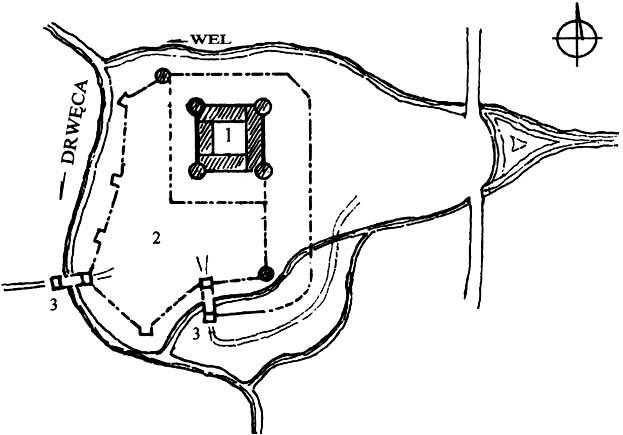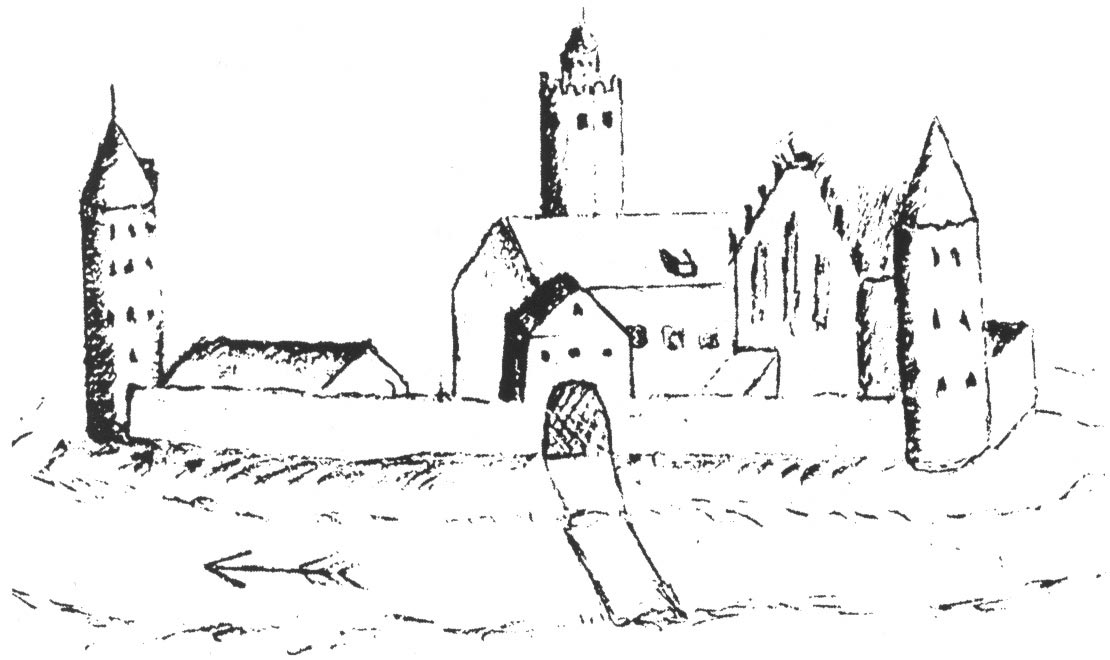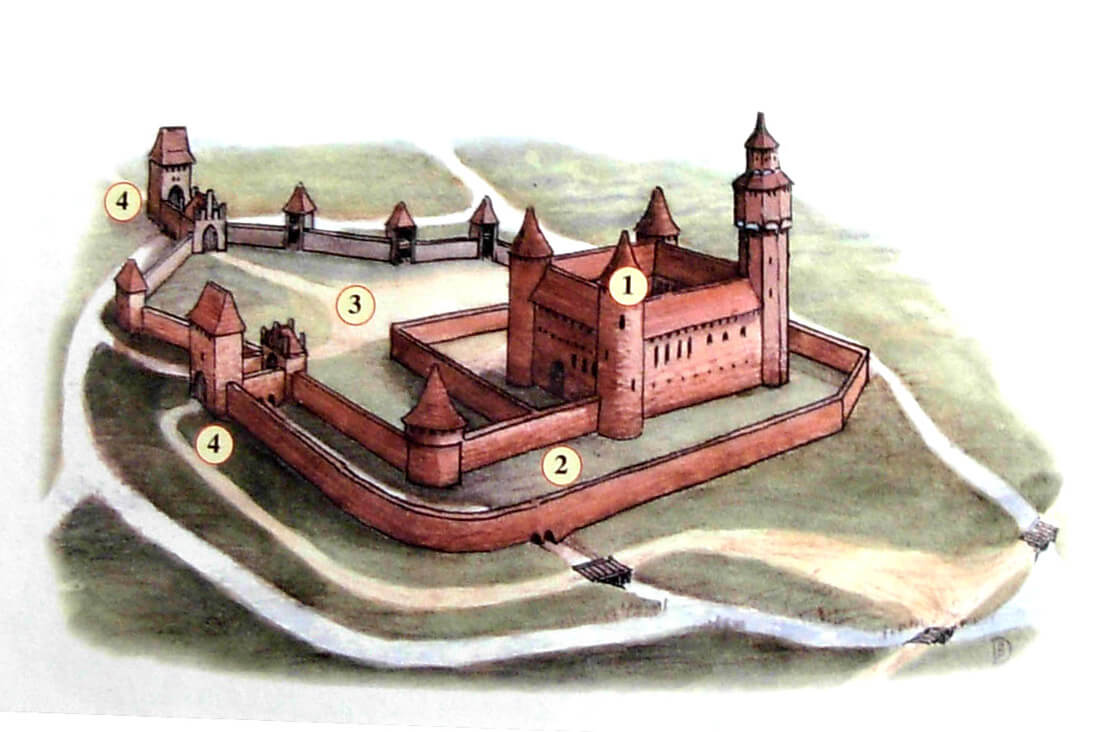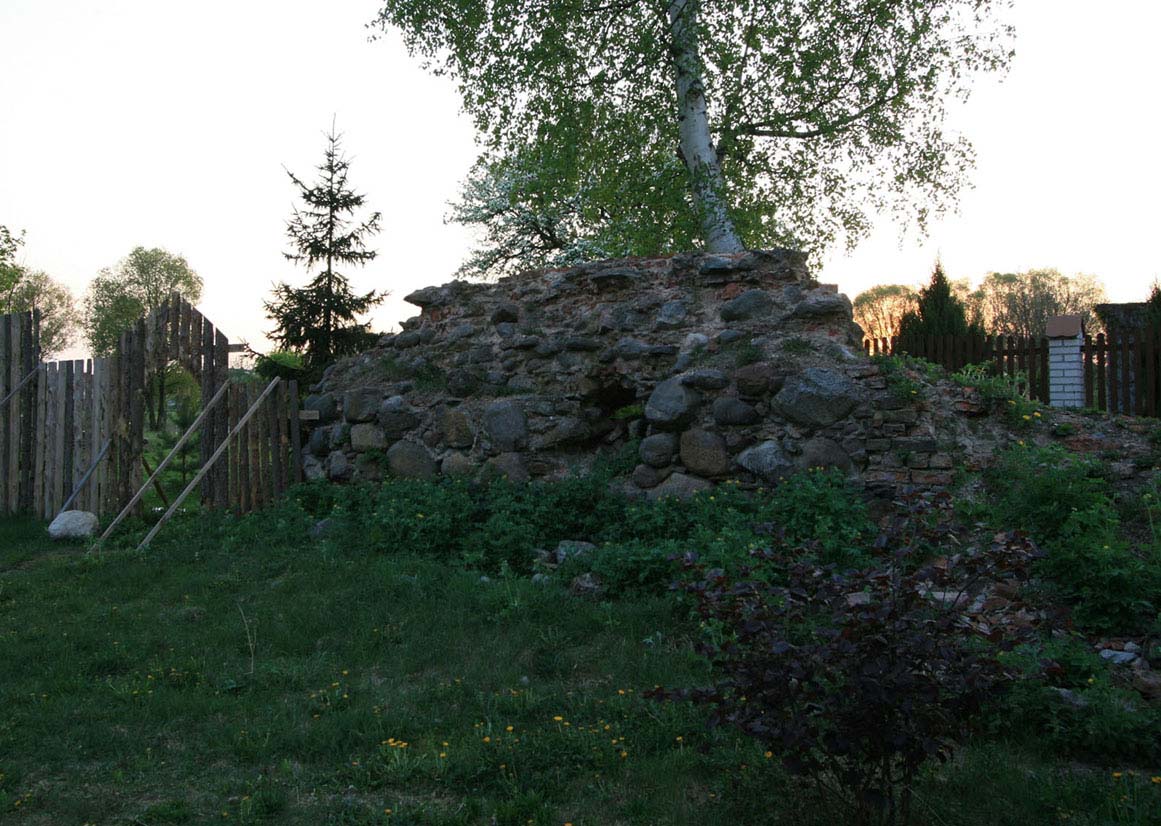History
The castle in Bratian was built in 1340-1360 as the seat of the Teutonic vogt, subordinate to the commandry in Malbork. The first documented mention of the castle dates back to 1343, when the meeting took place in the castle of Mazovian dukes Ziemowit II and Bolesław III with the grand master Ludolf König, in the matter of demarcating the border between Mazovia and the Teutonic state
In the years 1348-1353, Grand Master Henry Dusemer stayed in Bratian, who after leaving office spent the last years of his life in the castle. The last meeting of the highest dignitaries of the Order before the Battle of Grunwald took place in Bratian, and three days before it, after the Polish army passed from Kurzętnik near Bratian, the Teutonic army crossed Drwęca across the twelve bridges built here. After the Grunwald Battle, the castle was captured without a fight by the knight Jan Kretkowski, but in connection with the signing of the Toruń Peace in 1411 it returned to the Teutonic Knights. Again, Bratian was in Polish hands for a short time during the Hunger War in 1414, and then in February 1454, when it was conquered thanks to the help of the townspeople from Lubawa. In September, the command of the garrison was taken over by the Polish knight, Ramszo Krzykowski, who left the garrison in Bratian and went to Piotrków to the parliament. At that time, the castle was besieged by the mercenary troops of the Teutonic Order under the command of Thomas Seidlitz from Nowe Miasto Lubawskie. According to the chronicler Jan Długosz, the stronghold fell at the beginning of 1455 as a result of bribery. Although Bratian remained in the hands of the Teutonic Knights until the end of the war, the Second Peace of Toruń in 1466 granted the castle to Poland. It then became the seat of starosts, who were, among others, representatives of the Czapski, Działyński and Knyszyński families.
The castle declined in the 17th and 18th centuries, although no sieges, shelling or other deliberate damages were reported in documents. During the Prussian rule at the end of the 18th century it passed into private hands and was demolished by the beginning of the 19th century. A water mill was erected in its place.
Architecture
The castle was built among the waters of the Drwęca and Wel rivers. It was erected of bricks on a stone base, on a regular plan similar to a square with an internal courtyard. In the north-west corner there was a tower, round at the bottom, and a polygonal above. At the northern curtain there was a main, brick house in which the chapel was located. A building with a brick ground floor and half-timber upper floors adjoined the eastern curtain. At the western curtain, the buildings of the kitchen, brewery and bakery were located. The entrance led from the south through the moat. From the south and the west there was a large outer bailey, surrounded by a wall with probably two round towers and a gatehouse. The part of the outer bailey was a separate island, and on its territory there was, among others, a barn.
Current state
The castle in Bratian has not survived to our times, its place is marked only by a poorly visible hill with a few meters relic of the stone wall and remains of the cylindrical tower of the outer bailey.
bibliography:
Die Bau- und Kunstdenkmäler der Provinz Westpreußen, der Kreis Löbau, red. J.Heise, Danzig 1895.
Leksykon zamków w Polsce, red. L.Kajzer, Warszawa 2003.
Sypek A., Sypek R., Zamki i obiekty warowne od Malborka do Torunia, Warszawa 2004.
Wasik B., Budownictwo zamkowe na ziemi chełmińskiej od XIII do XV wieku, Toruń 2016.





